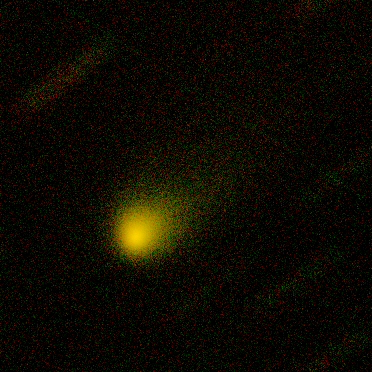Interactions among the small bodies of our Solar System are expected to hurl small objects out into interstellar space with some regularity, and the frequency was probably much higher early in the system's history. Given that the same thing almost certainly happens at exosolar systems—and we now know there are a lot of those—it's likely that the vast volume of interstellar space is lightly sprinkled with small objects, some of which may sporadically pass through our own Solar System. But up until very recently, we'd had no evidence of their existence.
That situation changed with the discovery of 'Oumuamua, a strange, cigar-shaped body that was the first confirmed exosolar visitor. But 'Oumuamua was so strange that it set some astronomers speculating that it could be an alien craft. Earlier this year, however, scientists spotted a second potential exosolar visitor, and this one looked a lot like a comet. Now, the first data on the object, 2I/Borisov, is in, and it's clearly exosolar in origin but looks so much like our existing comets that we might not have realized where it was from if we didn't have a good grip on its orbit.
The Crusher
The results come from quick work by a team of European researchers, who got a heads-up about 2I/Borisov's existence due to a software package they put in place. The code, called "Interstellar Crusher," is a Python software package that scans the Possible Comet Confirmation Page for new objects and attempts to calculate their orbits as they come in. As we described in our earlier coverage of 2I/Borisov, orbits that have a certain set of properties, called hyperbolic orbits, indicate that a body has come from outside our Solar System. These orbits indicate a body will only pass by the Sun once and originate from a source that's far outside the plane in which our planets orbit.
Interstellar Crusher quickly flagged 2I/Borisov as having a hyperbolic orbit, and the research team spent some time figuring out if there were any possible alternatives that work. All of these attempts would require at least one (and sometimes more than one) dramatic acceleration by a force other than the Solar System's gravity. In contrast, its trajectory worked nicely with gravitational forces if the calculations allowed a trajectory far from that of the Solar System's orbital plane.

The calculations indicated an eccentricity of 3.4, when anything much larger than about 1.2 would be considered a sign of exosolar origin. The authors note that you can't possibly explain this through interactions between 2I/Borisov and our Solar System's planets simply because the object would never have gotRead More – Source







